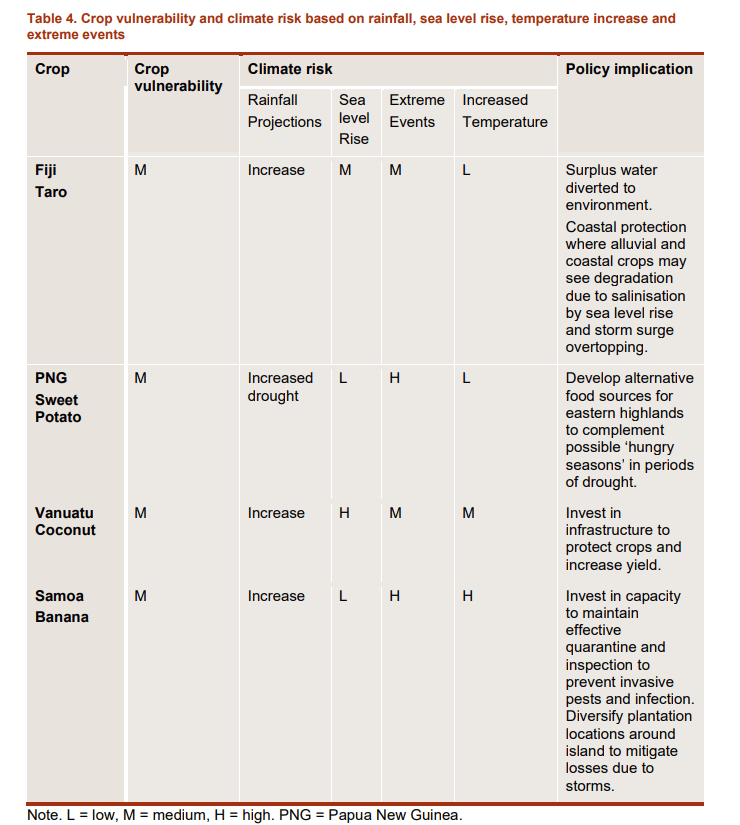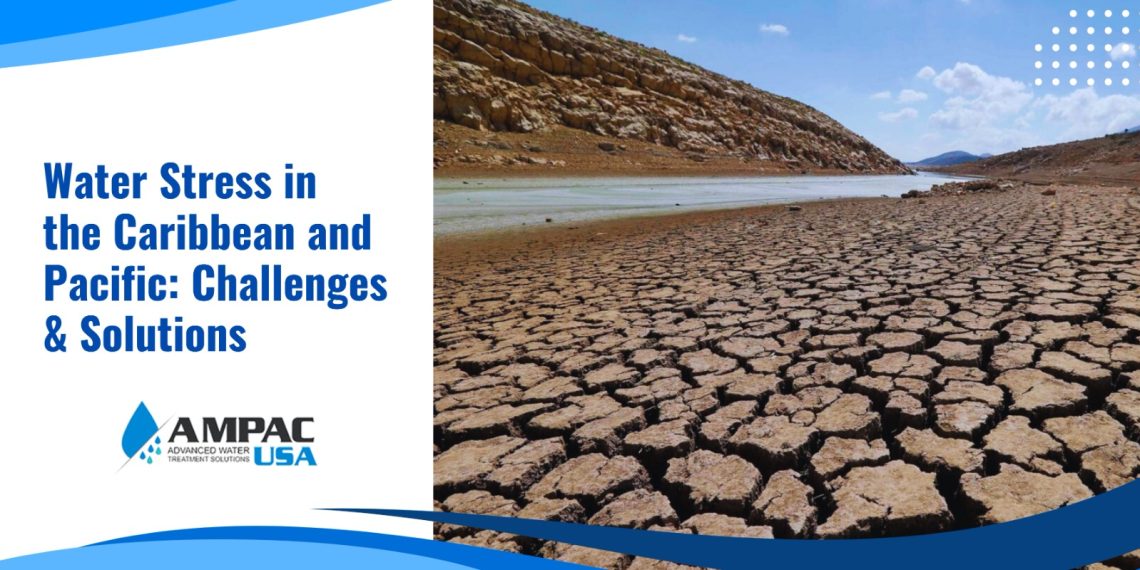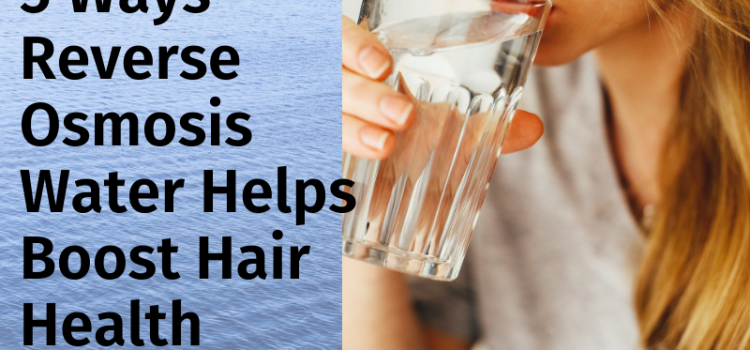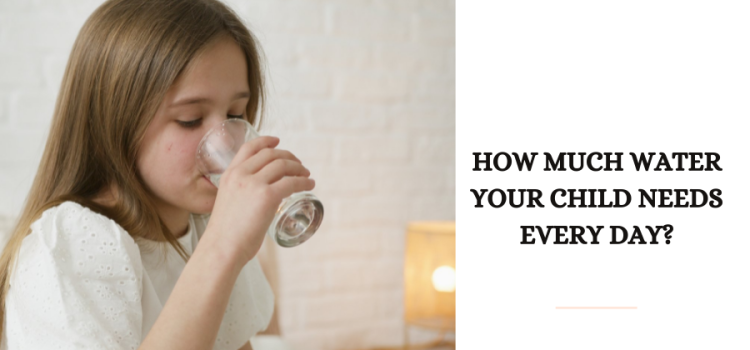Last updated on March 31st, 2025 at 12:07 pm
Drinking water problems in the Ocean countries, particularly the Caribbean and Pacific Island Nations, are quite diverse. The regions are highly prone to climate change and extreme weather events. Moreover, the limited financial and administrative capacity makes it difficult for them to cope with the consequences of climate change and water shortage. Increasing population and urbanization are making water sources scarce and jeopardizing water security further.
In this article, we explore the impact and reasons for drinking water problems in Ocean countries as well as effective solutions to address them.
Current Drinking Water Problems in Ocean Countries?
The Pacific Island nations are dealing with significant drinking water challenges today because of climate change, environmental vulnerabilities, and limited infrastructural capabilities.
Threat of Climate Change
For example, Kirbati, which consists of 33 coral islands in the middle of Pacific, is hit by a series of devastating cyclones, floods and droughts due to global warming. They threaten the accessibility of safe water and adequate water supply. Here, only residents who have tanks to collect rainwater can meet water demand for their personal use.
In Kiribati, Tuvalu, and the Marshall Islands, lack of consistent access to safe water for drinking occurs because the public supply does not run every day. The urban population also depends heavily on rainfall.
Impact of Saltwater Intrusion
Rising sea levels, driven by climate change, are making seawater infiltrate freshwater sources. In Vanuatu, Oceania, communities have reported well water becoming too salty for consumption. So, residents are forced to seek alternative sources or rely on rainwater. This intrusion not only affects drinking water but also harms agriculture by salinizing soils.
Worsening Dry Conditions
Within the past five years, every Caribbean Sea Island has experienced some sort of water scarcity. Droughts in Trinidad have made residents go under water restrictions through the end of June this year. The inability to access clean water is affecting almost every sector in Trinidad and Tobago, from small businesses to the agriculture sector. This, coupled with bush and forest fires and accompanying dry conditions, is making the water crisis a major issue.
In recent years, Dominica has also lost significant water capacity. The region’s Hydrological Cycle has undergone a major shift due to the environmental pollution that has overheated the atmosphere and reduced the freshwater resources. As a result, water shortages are a frequent occurrence.
Similarly, the island nation of Grenada is also facing the brunt of climate change and global warming. It officially declared a water crisis in May 2024 because the heatwave dried the dams, the main source of water.
Inadequate Sanitation & Overexploitation of Groundwater
Several reports confirm that Pacific Islanders have the lowest accessibility to potable drinking water and sanitation services. Only 55% of the population can access basic drinking water, and just 30% have sanitation services.
Elsewhere in the western United States, Mexico, and South America, overexploitation of aquifers and pollution are jeopardizing water security. For example, 40-60 percent of water in South America comes from aquifers. However, the region is facing increasing pollution from over-mining and agriculture.
In 2022, it was found that the natural recharge of the Mexico City Metropolitan Area aquifer is nearly 23 m3/s, which shows an overexploitation of groundwater resources of 25 m3/s or 800 Mm3 annually.
In Chile too, there’s been a sustained decline in groundwater resources post-1988, which was exacerbated since 2010 when the Megadrought hit. Here, extensive groundwater extraction and overreliance on it due to inadequate knowledge about hydrogeological systems and groundwater level evolution have endangered the freshwater supply.
These extensive drinking water problems in Ocean countries highlight the need for efficient water management, investment in new water treatment technologies, like seawater desalination, and targeted government interventions.
Impact of Water Scarcity in Pacific Islands & Caribbean
Water stress in ocean countries can lead to significant economic decline, low productivity, and health issues. Competition for limited water resources and improper management give rise to social tensions and conflicts within communities. Moreover, unchecked urbanization, land development, and population growth further hinder water security.
Health Issues
Water shortage impacts sanitation levels drastically. Over 60% of Papua New Guinea’s population cannot access safe drinking water and better sanitation. Decent toilets and proper hygiene remain elusive here, and for the rural poor, getting ill or dying from consuming contaminated water is normal. Over 350 children under 5 years of age die every year from diarrhea.
Water and sanitation issues are evident in Aregentina’s Chaco and Columbia’s Alta Guajira as well. Here, more than 400 million lack safe sanitation services. Lack of water and sanitation services reduces human capital and economic productivity because of the increased prevalence of diseases.
Socio-Economic Inequalities
Water scarcity exacerbates socio-economic inequalities. People with disabilities cannot cope with inadequate access to safe water and sanitation. In northern Vanuatu, for instance, people with disabilities reported a greater number of hindrances to accessing water at home when needed. They also face barriers to collecting water more independently than people without disabilities.
In the Caribbean, water scarcity often correlates with socioeconomic status. Lower-income communities frequently lack access to reliable water supply systems, leading to reliance on unsafe sources. This disparity affects health outcomes and economic opportunities, perpetuating cycles of poverty.
Agricultural Loss and Food Insecurity
In the last two decades, Latin America has been hit by 74 droughts, which have caused over $13 billion. It has singularly affected agricultural and livestock production negatively. Consequently, many farmers have lost their livelihoods. Over half of small-scale farmers live in conditions affected by drought and food insecurity in the Dry Corridor on the Central American Pacific Coast.
Climate change, leading to altered rainfall patterns and more frequent droughts, impacts food security and damages natural ecosystems. It also makes nations dependent on food imports when they cannot grow their native crops.
Saltwater intrusion and prolonged dry spells threaten food production in Pacific island nations like Fiji, Tuvalu, and the Solomon Islands. This table is a result of a study by the Australian Water Partnership. It shows crop vulnerability to climate change, considering its impact on Pacific water resources.

Source: Waterpartnership.org.au
Economic Decline
The Pacific Island nations have endured droughts for decades. They cause water shortages and deplete groundwater resources. This increases the extent and severity of wildland fires. The combined effect is the damage to terrestrial, aquatic, and nearshore habitats, translating into significant economic losses. Service sectors covering both tourism and non-tourism industries, as well as agriculture and food sectors, all use water extensively. The absence of sustainable water thus affects these sectors and causes economic decline.
Strategies to Combat Water Scarcity in Pacific Islands & Caribbean
Measures to address drinking water stress and crisis demand adequate adaptation and disaster risk reduction. It also needs strong transboundary water cooperation and financial support for water-related initiatives. Strategies to cope with climate change and the greater frequency of floods and droughts are also essential.
1. Sustainable Water Management Approaches
In order to accelerate access to water in the Caribbean, Pacific Island Nations, and Latin America, practices like rainwater harvesting and seawater desalination will immensely help.
Rainwater harvesting
Rainwater harvesting, which involves collecting rainwater on rooftops and storing it for future use, combined with central water systems, has significant potential to address water issues.
In Jamaica’s rural Mount Airy district, for example, farmers utilize large water tanks connected to rooftops to capture rainwater. The water is then used for drip irrigation systems supporting crops like tomatoes and sweet potatoes. This approach helps mitigate the effects of reduced and unpredictable rainfall.
Seawater Desalination
Transforming seawater into potable water through a seawater desalination system is another reliable solution for coastal and island communities. Innovations in this field aim to reduce energy consumption and environmental impact.
A seawater desalination solution is a great alternative to the unreliability associated with rainwater harvesting and overexploitation of groundwater. Here are several examples and case studies of how this water management technology has helped various islands in the Pacific.
Nauru
Nauru is highly dependent on rainwater, groundwater, and imported water. Mining activities have degraded land and limited groundwater availability. Additionally, over-pumping and wastewater contamination have reduced water quality.
Nauru set up a grid-connected solar power system and a reverse osmosis desalination plant in 2013, which had a daily treatment capacity of 100 m3 of water. It provided a high output while conserving energy. The installation of RO desalination plants provided clean water for residents and supported planned agricultural rehabilitation.
Kiribati
Kiribati faces variable rainfall, storm surges, and seawater intrusion that limit freshwater availability. It lacks surface water sources, and over-extraction leads to salinization of groundwater.
In 2020, a seawater desalination plant with a capacity of 6000 m3/day, along with water, sanitation, and hygiene awareness programs, was put in force in Kiribati’s capital, South Tarawa. It was instrumental in making the region resilient to climate change and reducing the prevalence of diarrheal disease due to inadequate water and sanitation.
Vanuatu (Uleu Island)
The island, with 80% of the rural population, lacks piped water, and the local economy relies on agriculture and fishing. Rainwater, groundwater, and surface water, which are often contaminated from upstream sources, are the major sources of water supply.
In 2018, a solar-powered desalination plant was set up in Vanuatu.
In 2023, it was upgraded with a new inverter and higher capacity feed pump. The plant successfully provided WHO-standard drinking water to the people of the island. Access to safe drinking water also reduced the cases of pneumonia and upper respiratory tract infections.
Water Reuse
Besides using seawater desalination solution, water reuse is another value-added measure to combat scarcity. This is especially helpful for the tourism and hospitality sectors, like hotels and resorts in the Caribbean. Energy-efficient wastewater treatment solutions make the quality of dirty water suitable for reuse in power generation, beverage bottling, food production, boiler feeds, and cooling systems.
The water demand per person by the tourism sector is eight times more than the local population. Reverse osmosis desalination and wastewater reuse make potable water available so that hotels do not rely on natural or traditional water sources.
2. Climate-Resilient Irrigation
Climate-resilient irrigation involves adaptive strategies like smart irrigation and technologies to produce crops even when climate conditions are unpredictable, like erratic rainfall, droughts, and floods. An example is the Alternate Wetting and Drying technique that has been instituted by the Viet Nam Sustainable Agriculture Transformation Project. Through it, fields are periodically dried because plant roots hold sufficient water from earlier flooding.
Sensors monitor water levels, and a mobile application alerts farmers to stop or resume watering. It optimizes water instantly. However, successful implementation of climate-resilient irrigation demands collaborative efforts between the government and the communities.
3. Investment in Hydraulic Infrastructure
To reduce water scarcity and optimize management, a good hydraulic infrastructure is crucial. Expanding the natural and built storage capacity of water through dams, reservoirs, pipes, and pumping stations makes access to clean water sustainable.
A recent initiative has been made at Fiji in the Pacific, where a workshop aimed at Pacific Early Warning Systems for Flood and Flash Flood Guidance System projects brought together National Meteorological and Hydrological Services (NMHSs) and National Disaster Management Offices (NDMOs) from Fiji, Kiribati, Samoa, Solomon Islands, Tonga, and Vanuatu. The goal is to set up a strong regional approach to manage flood-related risks.
The workshop highlighted the significance of aligning national strategies with global funding for climate resilience to secure sustainable support for hydrological and flood management measures. Fiji has also put in place a $405 million program to launch raw water intake on the Rewa River with a water treatment system, a pumping station, and a reservoir. The project will further upgrade 31 wastewater pumping stations and expand its services to 15 % more of Suvas households.
Conclusion
Addressing drinking water issues in Ocean countries requires urgent investment and coordinated efforts to enhance resilience against climate change. It also demands equitable access to safe drinking water for all populations.
Ampac USA‘s state-of-the-art treatment seawater desalination technologies make adequate water accessible for residential and industrial uses. Our solar water treatment, reverse osmosis desalination plants, water provisioning, and mobile water treatment solutions are capable of meeting varying levels of water demand.
By strategically planning the installation of these systems along with collaborative efforts for water conservation, the reliance on freshwater resources and vulnerability to climate change can be greatly reduced. Contact our water experts to discover how our sustainable water and wastewater treatment solutions can help you navigate water shortage in your region.










